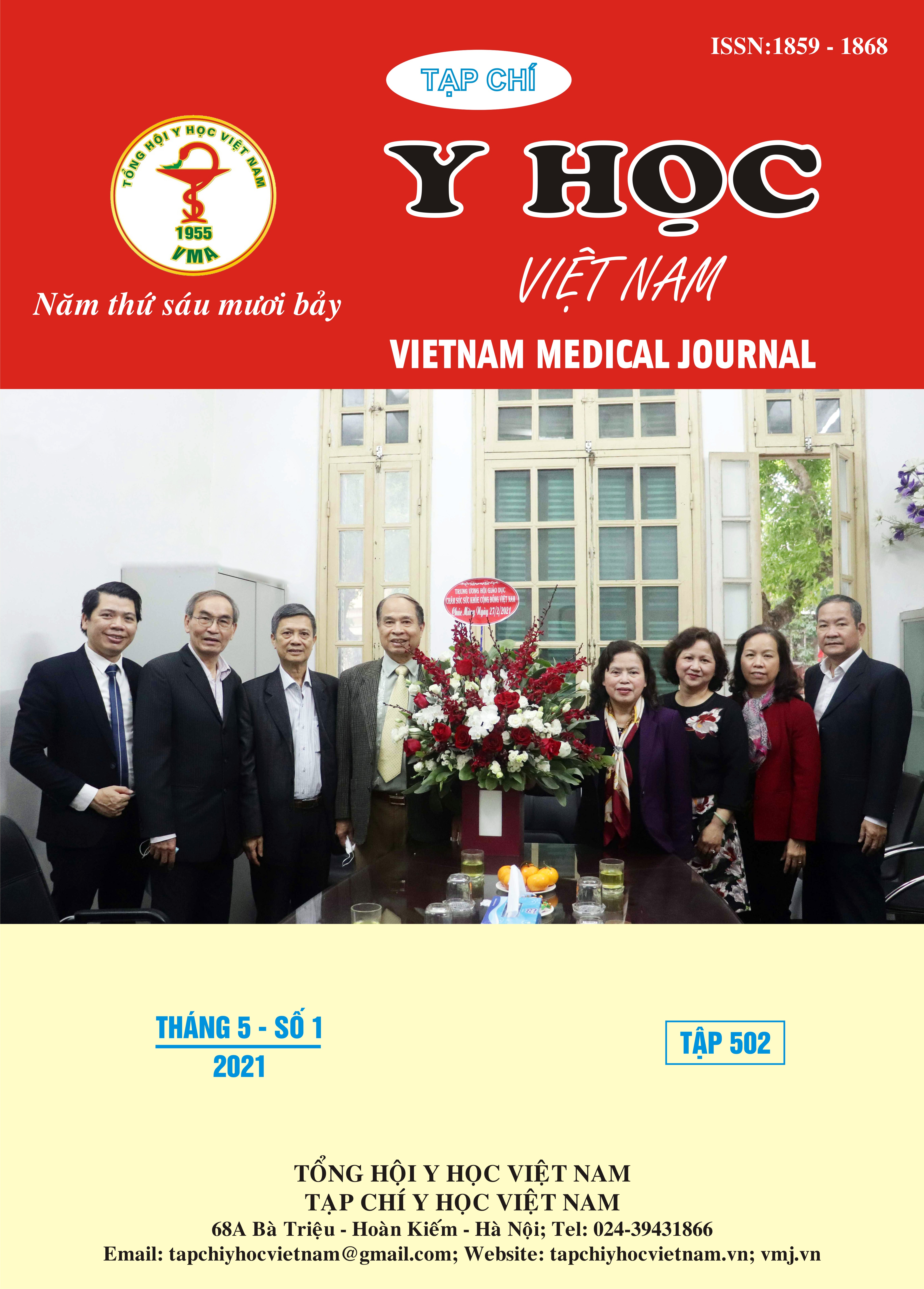CLINICAL AND LABORATORY CHARACTERISTICS OF PATIENTS WITH DRUGS OF ABUSE POISONING AT POISON CONTROL CENTER BACHMAI HOSPITAL
Main Article Content
Abstract
Objective: to assess clinical and laboratory characteristics of patients with non-opium drugs of abuse poisoning. Subjects and Methods: A observational study included 72 poisoned non-opium drug poisoning patientstreated at Poison Control Center Bach Mai Hospital from 1/2017 to 6/2019. Results: Common non-opium drugs of abuse: Amphetamine (29.2%), MET (22.2%), MDMA (19.4%), THC (20.8%), Ketamin (8.3%). The main clinical features of cardiovascular and central nervous system in sympathomimetic and serotonin syndromes: tachycardia (73.6%), increased blood pressure (45.8%), fever (43.1%); Consciousness disorder 100% (stimulus 58.3%, struggling 23.6% and 18.1% confusion/coma), increased sweating (77.8%), dilated pupils (59.7%), increased muscle tone (55.6%), increased tendon reflexes (47.2%); 84.7% have serotonin syndrome. Laboratory: leukocytosis (41.7%), increased CK(38.9%), rhabdomyolysis (13.9%), acute renal failure (12.5%), increased troproninT (10%). Conclusion: the evaluation of clinical and laboratory characteristics in patients with drugsof abuse poisoning is essential for early diagnosis and management of patients.
Article Details
Keywords
drugs of abuse poisoning
References
2. Nguyễn Thanh Long và và cộng sự. Hành vi nguy cơ lây nhiễm và tỷ lệ nhiễm HIV trong nhóm nghiện chích ma túy tại khu vực nông thôn miền núi tỉnh Bắc Giang, năm 2010. Tạp chí Y học thực hành2010, số 742-743: 197-200
3. Nguyễn Thị Dụ, Định hướng chung chẩn đoán và xử trí ngộ độc cấp, Tư vấn chẩn đoán và xử trí nhanh ngộ độc cấp. Nhà xuất bản Y học Hà Nội. 2004; 9-22.
4. Gainza I., Nogue S., Martinez Velasco C.,et al (2003), "Drug poisoning", An Sist Sanit Navar, 26 (1): 99-128.
5. Spiller H. A., Hays H. L., Aleguas A. (2013), "Overdose of drugs for attention-deficit hyperactivity disorder: clinical presentation, mechanisms of toxicity, and management", CNS Drugs, 27(7), tr. 531-43.
6. Fogel C Osborne GB (2008), "Understanding the motivations for recreational marijuana use among adult Canadians", Substance Use & Misuse,43(3-4), 539–72.
7. Robert J Hoffman (2020), “Ketamine poisoning”, Uptodate 2020.
8. Geetruida D van Dijken, Renske E Blom, Ronald J Hené, et al (2013), High incidence of mild hyponatraemia in females using ecstasy at a rave party, Nephrol Dial Transplant, 28(9):2277-83.


